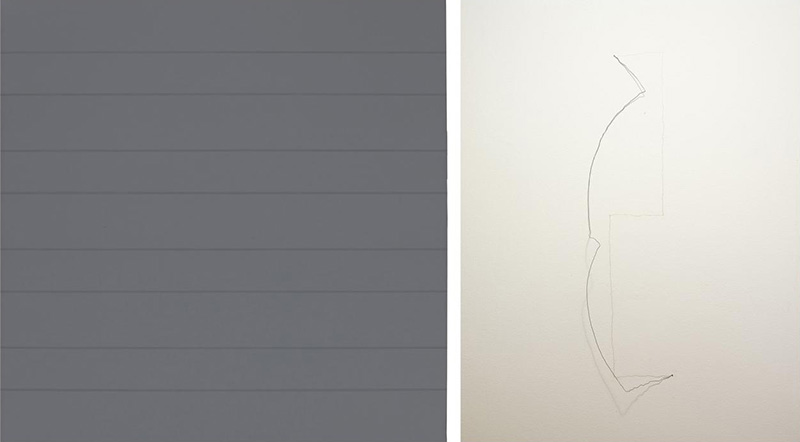ART CITIES:N.York: Agnes Martin & Richard Tuttle
 Agnes Martin and Richard Tuttle first met in the early ‘60s at Betty Parsons Gallery in New York and remained close friends until Martin’s death in 2004. Martin was a contemporary of the Abstract Expressionists and identified her work with the movement, but her painting also presaged the arrival of Minimalism.
Agnes Martin and Richard Tuttle first met in the early ‘60s at Betty Parsons Gallery in New York and remained close friends until Martin’s death in 2004. Martin was a contemporary of the Abstract Expressionists and identified her work with the movement, but her painting also presaged the arrival of Minimalism.
By Efi Michalarou
Photo: Pace Gallery Archive
Comprised of vertical and horizontal lines and grids painted upon washes of subdued color, Agnes Martin’s paintings delicately navigate line, surface, tone, and repetition, inducing a sense of serenity, much like a mantra. Richard Tuttle, too, has investigated similar concerns of line, volume, color, shadow, and perception throughout his career. Whereas Martin operated largely within the confines of painting and drawing, his practice eludes formal categorization and is grounded in handmade constructions of ordinary materials, such as wire, tape, thread, and cardboard that are raised to the pinnacle of beauty. For the exhibition “Crossing Lines” Richard Tuttle created new artworks in response to, and installed among seven grey paintings by Agnes Martin. Once the paintings by Martin dating from the 1960s through the early 2000s, installed, Tuttle created new wire pieces that respond to the paintings and engage with the distinct light and shadow of their illuminations. First begun in the early ‘70s, Tuttle’s wire pieces exist as dimensional drawings comprising three elements: a pencil line on a wall, wire, and shadow.Tuttle’s work exists in the space between painting, sculpture, poetry, assemblage, and drawing. He draws beauty out of humble materials, reflecting the fragility of the world in his poetic works. Without a specific reference point, his investigations of line, volume, color, texture, shape, and form are imbued with a sense of spirituality and informed by a deep intellectual curiosity. Language, spatial relationship, and scale are also central concerns for the artist, who maintains an acute awareness for the viewer’s aesthetic experience. In an intensely physical process that Tuttle describes as “an activity,” wire is attached to the wall near the endpoints of the pencil line and then allowed to spring or fall away from the surface, creating its shadow as the third element of the piece. The final qualities and experience of each piece result from the specificities of each one’s distinct environment fused with the artist’s own physicality.
Info: Pace Gallery, 32 East 57th Street, New York, Duration: 2/11/17-13/1/18, Days & Hours: Tue-Sat 10:00-18:00, www.pacegallery.com
